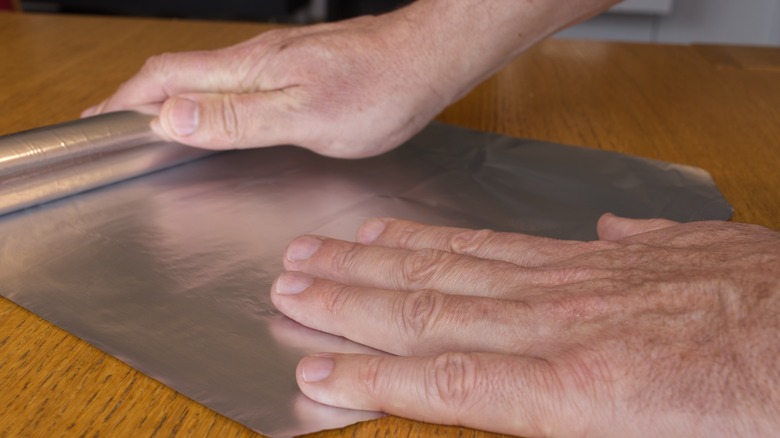Rodents can sometimes gravitate to young trees as a source of food, but, luckily, wrapping the trees’ bases with aluminum foil is a highly effective physical barrier against rodent attacks. It’s a straightforward solution, but don’t underestimate its effectiveness; the foil genuinely works wonders in deterring these pesky creatures. As the chill of winter starts to creep in, the risk to your young trees from various environmental threats escalates, and rodents top the list of potential dangers. During these cold, unforgiving months, these tenacious pests focus intently on the vulnerable lower regions of your young trees. They gnaw and chew at the bark unrelentingly, causing subsurface injuries that compromise the tree’s immediate health and potential for thriving in future seasons.
If you’re committed to the maintenance of your trees, you must take proactive steps to mitigate this risk. Fortunately, a simple roll of aluminum foil can act as a strong defense. It stands like a vigilant sentinel, guarding against the winter onslaught of these rodents. The foil not only acts as a physical barrier but also makes it uncomfortable for these pests, rendering your trees a less appealing target. In doing so, you are actively contributing to preserving your trees’ health.
Why aluminum foil is an effective barrier against rodents

You might be scratching your head, wondering why aluminum foil, a staple in your kitchen, can effectively tackle such a persistent problem as rodent infestation. The secret is in the sensory experiences this material induces. Rodents are highly sensitive to touch and sound. When their paws interact with a surface, it’s not just a tactile experience, but also an auditory one. The feel of aluminum foil, crinkly and cold, is absolutely detestable to them. Imagine the revulsion you’d feel stepping on something grotesque; that’s probably how a rodent feels about aluminum foil. It doesn’t stop there. The noisy crinkles produced when they touch the foil add another layer of deterrence, making the whole experience doubly unpleasant for these critters.
Additionally, aluminum foil’s texture isn’t just a sensory nightmare for rodents; it’s also a functional one. The foil’s slippery surface makes it difficult for rodents to maintain a grip, preventing them from scaling or sliding over it. Together, these features work in tandem to make aluminum foil a fortress that rodents are highly averse to breaching. This prompts them to seek alternative food sources, leaving your young trees unscathed. Adding to your peace of mind is the durability of aluminum foil. Unlike other materials susceptible to the wear and tear of moisture and weather, aluminum foil is robust and resilient, offering a long-lasting shield for your vulnerable trees. With all these advantages, aluminum foil becomes an effective and responsible choice for safeguarding your young trees.
How to wrap your young trees with aluminum foil
So, how do you go about turning a roll of aluminum foil into a fortress for your trees? Begin by measuring the circumference of your young tree’s trunk near the base. This measurement helps you determine how much foil you’ll need. Once you’ve got that figure, tear off an adequate size of foil sheet for the job. You should aim for at least two layers of foil for solid protection. With your gloves on, start at the tree’s base and wrap the first layer of aluminum foil around the trunk. Keep the foil firmly pressed against the bark. The aim is to ensure it’s snug, but not too tight, to avoid constraining the tree’s natural growth. Once you’ve wrapped the first sheet around the tree, begin similarly applying the second sheet, again starting from the base and working your way up.
As your tree grows, the foil wrap will require periodic adjustments. Keep an eye on it, especially as the tree expands. It’s advisable to redo the wrapping occasionally to cater to the tree’s growing circumference. Particularly when winter approaches — a prime time for rodent activity — make it a habit to inspect your foil barrier. Ensure that it’s still in place, and refresh the wrapping if it’s starting to look worn or loose. This proactive step can save you from the unpleasant surprise of discovering damage to your young tree later on.